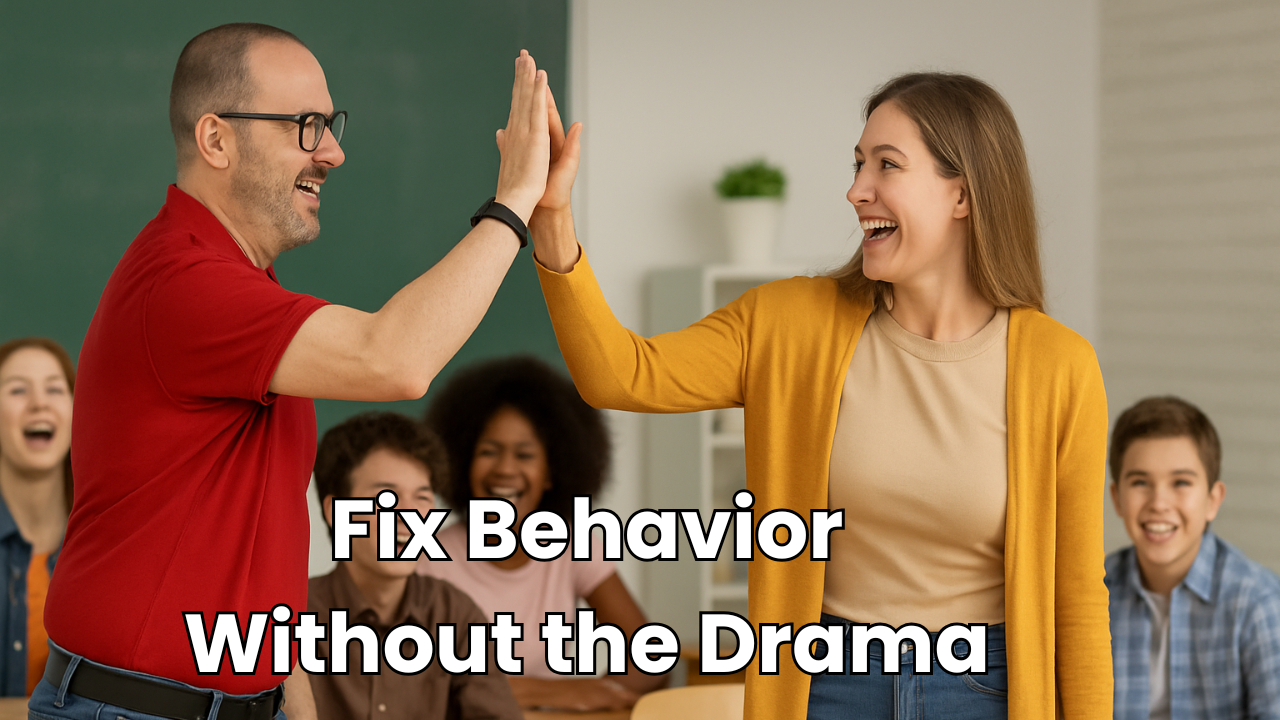
Introduction
Authentic resources bring the real world into the language classroom, exposing students to natural speech, cultural nuances, and language in context. They provide a window into how native speakers actually communicate—something no textbook or scripted dialogue can fully replicate. However, for many teachers, integrating authentic materials into a comprehension-based instruction (CI) classroom, especially at advanced levels, can feel daunting. The pace of speech in videos, the complexity of text, and the presence of unfamiliar structures often make authentic resources seem overwhelming rather than helpful.
The good news is that with the right strategies, authentic materials can become powerful tools for boosting student engagement and proficiency without frustration. The key is in how they are selected, introduced, and scaffolded. In this guide, we’ll break down a simple, achievable approach to integrating authentic resources successfully, making them accessible, comprehensible, and enjoyable for your students.
Choosing the Right Authentic Resources for CI
Not all authentic materials are created equal, and some work much better than others in a CI-focused classroom. The goal is to choose resources that naturally reinforce what students have already acquired while also challenging them just enough to continue their growth.
A great starting point is selecting materials that center around familiar contexts. For example, an article about a well-known holiday, a video about a common daily activity, or a recipe for a dish students have likely encountered can all serve as excellent entry points. When students can relate to the topic, their prior knowledge helps them make sense of new language elements.
Another important factor is the frequency of useful structures within the resource. Materials that reinforce high-frequency words and structures that students have already acquired are much more effective than content overloaded with complex, low-frequency vocabulary. A short, engaging news article that features familiar verb tenses is far more useful than a technical article filled with specialized jargon that won’t apply to their real-world communication skills.
It’s also crucial to modify or adapt authentic resources when necessary. While purists may argue against altering a text, small tweaks—such as bolding key phrases, providing context before reading, or breaking content into smaller sections—can make all the difference in comprehension. The goal isn’t to make things artificially easy but to ensure that students engage with the material in a way that builds confidence rather than leading to frustration.
Scaffolding Authentic Texts for Comprehension
Once the right resource is selected, the next challenge is making it comprehensible without watering it down. Many teachers hesitate to use authentic texts because they fear students won’t understand them, but scaffolding techniques can bridge the gap between unfamiliar and familiar language.
Before diving into the text, students benefit greatly from pre-teaching key structures and vocabulary. Rather than presenting a long list of isolated words, it’s more effective to introduce these words in meaningful chunks that will appear in the text. If the material is a blog post about travel, students might first work with phrases like me quedé en (I stayed at), tomé un autobús a (I took a bus to), and fue increíble porque (it was amazing because). By familiarizing students with these structures in a communicative context first, they can later recognize them in the reading.
Another effective technique is using visuals and context clues to support comprehension. If students are reading an article about a traditional festival, showing images of the event, playing a short video clip, or discussing what typically happens at similar celebrations can activate background knowledge. This approach makes the language feel less abstract and more connected to what they already know.
Chunking the text into smaller sections also helps prevent cognitive overload. Instead of handing students a long article and expecting them to decipher it in one sitting, breaking it into short paragraphs with guiding questions encourages deeper engagement. For each section, students can focus on identifying key ideas rather than trying to understand every single word, reducing frustration and promoting overall comprehension.
Making Authentic Listening More Accessible
Listening comprehension is often one of the biggest challenges when working with authentic resources. Native speakers naturally use connected speech, informal expressions, and varied pacing, which can make even seemingly simple audio content feel overwhelming. However, strategic scaffolding can make authentic listening both achievable and highly rewarding for students.
One of the simplest ways to make listening content more accessible is by slowing it down. Many online platforms, such as YouTube, allow users to adjust the playback speed of videos without distorting the audio quality. Lowering the speed slightly gives students more time to process the language while still exposing them to natural pronunciation and intonation.
Providing transcripts alongside audio resources is another effective support strategy. Reading along while listening allows students to make direct connections between spoken and written language, helping them decode sounds they might not initially recognize. Over time, this practice improves their ability to process spoken language in real time without needing written support.
Repeating key segments multiple times with specific listening goals also enhances comprehension. Rather than asking students to listen to an entire recording in one go, breaking it into short clips and focusing on one aspect at a time—such as identifying main ideas, recognizing specific phrases, or noticing tone and mood—makes the task more manageable. Listening with purpose improves both engagement and retention.
Engaging Students with Authentic Resources
Authentic resources only become powerful learning tools when students actively engage with them. Simply presenting an article, video, or podcast without interaction often leads to passive learning, where students may go through the motions but fail to internalize the language. To maximize the impact of authentic materials, activities should encourage meaningful interaction.
One effective approach is turning comprehension into conversation. After engaging with an authentic resource, students can work in pairs or small groups to discuss their takeaways. Even something as simple as asking “What was the most surprising thing you learned?” or “Would you recommend this video to a friend? Why or why not?” encourages them to process and use the language actively.
Comprehension checks also play a key role in making sure students engage deeply with the material. Rather than relying solely on traditional quizzes or worksheets, consider alternative assessments such as exit tickets, graphic organizers, or simple retellings. For example, after watching a short authentic video, students can summarize it in their own words, create a timeline of events, or illustrate key moments. These low-stakes activities provide insight into comprehension while allowing students to demonstrate their understanding in different ways.
Making the content personally relevant also enhances engagement. When students see a direct connection between what they’re learning and their own lives, motivation increases. If the authentic resource is about a cultural tradition, inviting students to compare it to traditions they celebrate fosters a sense of connection. If the material is about daily routines, asking students to describe their own routine using the same structures builds both comprehension and production skills.
Assessing Comprehension and Progress with Authentic Resources
Using authentic materials effectively means going beyond simply exposing students to them—it requires checking for understanding in meaningful, proficiency-focused ways. Rather than traditional comprehension questions that rely on isolated fact-recall, assessments should focus on holistic language use.
One simple way to assess comprehension is through student retells. Asking students to explain the main idea of a text, video, or podcast in their own words—either verbally or in writing—demonstrates their ability to process and convey information in the target language.
Non-verbal assessments can also provide valuable insight into comprehension. For example, students might create a visual summary, sequence key events in order, or match statements to images representing key moments in a story. These activities allow for comprehension checks without forcing students into high-stakes verbal output.
Finally, allowing students to express comprehension through multiple formats ensures all learners can engage successfully. Some may prefer verbal responses, while others might excel in written or creative visual formats. Providing choice in how students demonstrate their understanding makes assessment more equitable and effective.
Conclusion
Authentic resources don’t have to be intimidating or overwhelming. With careful selection, strategic scaffolding, and meaningful engagement activities, they can become one of the most powerful tools in a CI classroom. Whether through adapted readings, scaffolded listening activities, or interactive assessments, authentic materials help bridge the gap between classroom language learning and real-world communication. By implementing these simple strategies, you can make authentic resources accessible, engaging, and highly effective for your students.
Curious about how strong your CI approach is? Take the CI Proficiency Quiz now and see where you stand: https://imim.us/ciquiz
Key Takeaways:
- Selecting authentic materials with high-frequency structures makes them more accessible.
- Scaffolding techniques like pre-teaching, visuals, and chunking improve comprehension.
- Slowing down, providing transcripts, and looping key sections enhances listening skills.
- Active engagement through discussion, retells, and personal connections increases retention.
- Alternative assessments, such as non-verbal demonstrations, support comprehension checks.



